
Vladimir Yevgrafovich Tatlin was a Russian, Ukrainian, and Soviet painter, architect and stage-designer. Tatlin achieved fame as the architect who designed The Monument to the Third International, more commonly known as Tatlin's Tower, which he began in 1919. With Kazimir Malevich he was one of the two most important figures in the Soviet avant-garde art movement of the 1920s, and he later became an important artist in the constructivist movement.

Moscow Does Not Believe in Tears is a 1980 Soviet romantic drama film made by Mosfilm. It was written by Valentin Chernykh and directed by Vladimir Menshov. The leading roles were played by Vera Alentova and Aleksey Batalov. The film won the Academy Award for Best Foreign Language Film in 1981.

Otis College of Art and Design is a private art and design school in Los Angeles, California. Established in 1918, it was the city's first independent professional school of art. The main campus is located in the former IBM Aerospace headquarters at 9045 Lincoln Boulevard in Westchester, Los Angeles. The school's programs, accredited by the WSCUC and National Association of Schools of Art and Design, include BFA and MFA degrees.
Soviet nonconformist art was Soviet art produced in the former Soviet Union outside the control of the Soviet state started in the Stalinist era, in particular, outside of the rubric of Socialist Realism. Other terms used to refer to this phenomenon are Soviet counterculture, "underground art" or "unofficial art".
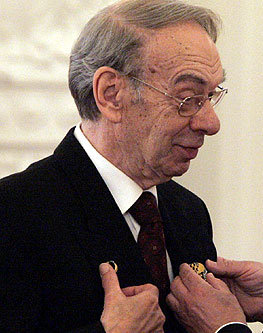
Aleksey Vladimirovich Batalov was a Soviet and Russian stage and film actor, film director, screenwriter and pedagogue acclaimed for his portrayal of noble and positive characters. He was named a People's Artist of the USSR in 1976 and a Hero of Socialist Labour in 1989.

Anastas Alekseevich Mikoyan, also known professionally as Stas Namin is a Russian rock musician, known as the leader of the popular Soviet music group, Tsvety. He is also a composer, actor, record producer, and director, and lends his name to the theatre he created in Moscow, the Stas Namin Music and Drama Theatre.
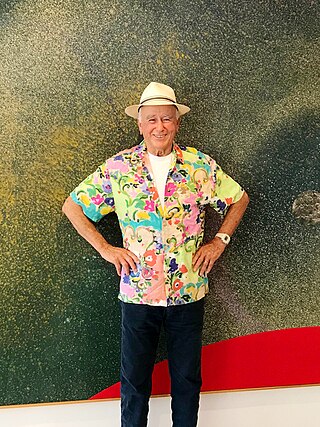
Billy Al Bengston was an American visual artist and sculptor who lived and worked in Venice, California, and Honolulu, Hawaii. Bengston was probably best known for work he created that reflected California's "Kustom" car and motorcycle culture. He pioneered the use of sprayed layers of automobile lacquer in fine art and often used colors that were psychedelic and shapes that were mandala-like. ARTnews referred to Bengston as a "giant of Los Angeles's postwar art scene."

Vagrich (Vahrij) Hakobi (Akopovich) Bakhchanyan was a Ukrainian graphic artist and designer of Armenian heritage. He was a Soviet nonconformist and Ukrainian underground artist, and conceptual writer and poet working in the Russian language.
Aidas Bareikis is a Lithuanian artist, currently working in the United States.
Therman Statom is an American Studio Glass artist whose primary medium is sheet glass. He cuts, paints, and assembles the glass - adding found glass objects along the way – to create three-dimensional sculptures. Many of these works are large in scale. Statom is known for his site-specific installations in which his glass structures dwarf the visitor. Sound and projected digital imagery are also features of the environmental works.
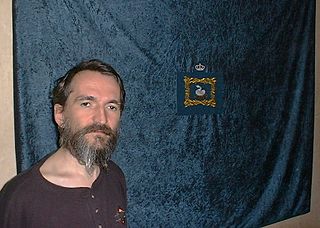
Timur Petrovich Novikov was a Russian visual artist, designer, art theorist, philosopher, and musician. He is considered one of the most influential proponents of Nonconformist Art before and after the dissolution of the Soviet Union in 1991.
Dawn Kasper is a New York-based interdisciplinary artist working across genres of performance, installation, sculpture, drawing, photography, video, and sound. Her often improvisational work derives from a "fascination with existentialism, subjects of vulnerability, desire, and the construction of meaning." Kasper uses props, costume, comedy, gesture, repetition, music, and monologue to create what she refers to as "living sculptures."

The American Repertory Theater/Moscow Art Theatre (ART/МХАТ) Institute for Advanced Theater Training at Harvard University was founded in 1987 as a training ground for the new American Theater by the Robert Brustein.
Serge Sorokko is an American art dealer, publisher and owner of the Serge Sorokko Gallery in San Francisco. He played a major role in establishing the first cultural exchanges in the field of visual arts between the United States and the Soviet Union during the period of perestroika. Sorokko is the recipient of various international honors and awards for his contributions to culture.
Leonid Mikhailovich Steele was one of the leading artists of the Russian Realist School - the Soviet period in Russian Art known as socialist realism or socrealizm. A member of the USSR Union of Artists since 1958, he is known for his large multi-figure works, as well as figure, genre and landscape works - especially his portrayals of peasant life in the Ukraine and nature scenes of the Moscow region. In addition to his reputation for having a painterly impressionist style, Steele became one of the early pioneers of what eventually became known as severe style.

G. James Daichendt is an art critic and art historian. He serves as the Dean of the Colleges and Professor of Art History at Point Loma Nazarene University in Southern California. He is also a professor at Boston University.
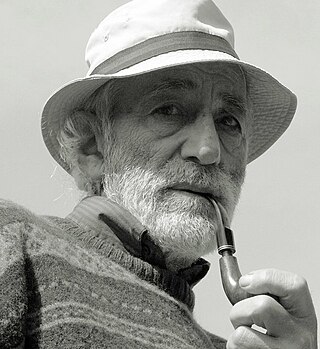
Ashot Melkonian was an Armenian artist associated with Neorealistic artistic style and Honorary Artist of Armenia. He mainly devoted himself to landscape and portraits painting, as well as murals. He is one of the founders of Neorealism in Armenian art. Art critic Shahen Khachatrian referred to Melkonian as "an artist of the generation of the 1960s that provided a new impetus to the development of Armenian art. Reality is a characteristic feature of Ashot's art". Honorary artist of Armenia Hakob Hakobian referring to Melkonian wrote "a brilliant composer of scenes, an author of exquisite portraits and landscapes, a master of gentlest and subtlest painting ... Melkonian is the pride of our painting school." According to art critic L.S. Zinger (Moscow), Melkonian's art is "a mix of humanistic tradition and his Armenian outlook."
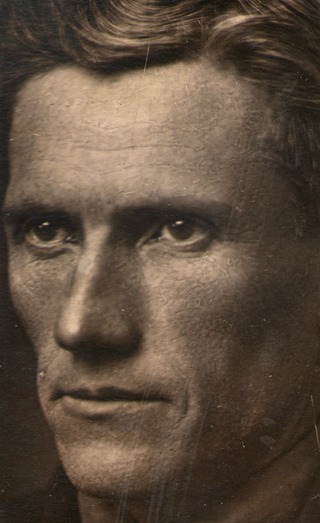
Mikhail Mikhailovich Tarkhanov was a Russian and Soviet painter known for his "Picturesque Textured Improvisations", abstract water based textured compositions. He studied at the Stroganov Moscow State University of Arts and Industry where he graduated in 1915. After being called to the Russian army in 1916 and 1919 as an artist-topographer and draftsman, he entered the VKhUTEMAS, the Russian state art and technical school, in 1921. His teachers were Vasili Kandinsky, Vladimir Favorsky and Nikolay Kupreyanov. He worked for many Soviet institutions as he pursued his abstract work, which were restricted in the communist Russia.
Georgiy Aleksandrovich Rubchinskiy, known as Gosha Rubchinskiy, is a Russian fashion designer, photographer and the founder of his eponymous brand. Rubchinskiy takes inspiration from the fall of the Iron Curtain, Russian street and youth culture, and his experiences to create his collections, pushing Russian iconography, both past and present, onto the world stage through his runway shows and his imagery.
Valery Alexandrovich Volkov was a Soviet-Russian painter and art historian who lived and worked in Central Asia and in Russia. Intercultural experiences and knowledge gleaned from the art history of two different cultures was reflected in a distinctive fusion of influences in his paintings. His painting style is associated with abstract expressionism and merges a sensual world of colour of the Orient and the gestural brush technique of European modernism.












